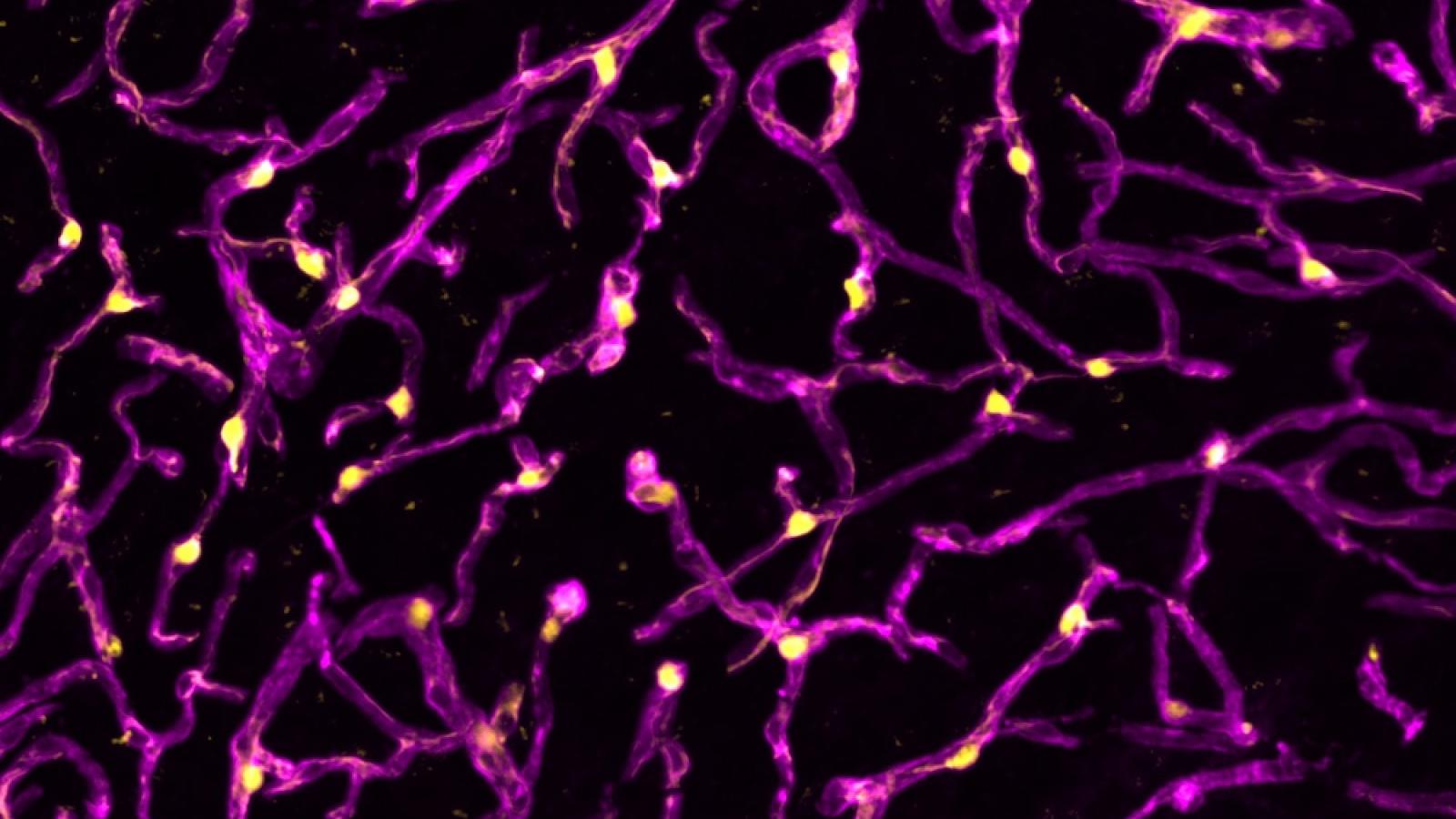A major new UK DRI project to develop an ‘atlas’ of the gene activity in the blood vessels of the brain is set to transform understanding of vascular dementia. Combining this map with genetic studies, the project will address a critical knowledge gap by identifying which genes influence our risk of vascular dementia, and how their effects manifest.
Vascular dementia is the second most common cause of dementia after Alzheimer’s, accounting for 15-30% of cases. It is caused by dysfunction in blood flow to parts of the brain, leading to cell damage and neurodegeneration. While gene expression maps have been available for Alzheimer’s and Parkinson’s for several years, scientists researching vascular dementia lack this fundamental information. Unlocking this knowledge will enable researchers to identify new therapeutic targets for vascular dementia.
The highly collaborative project, funded by the British Heart Foundation (BHF) and led by Prof Caleb Webber (UK DRI Director of Data Science), is a joint effort between the UK DRI and Dementias Platform UK (DPUK). It was born out of a Vascular Research Theme meeting between the two organisations, which came together to identify critical gaps in our knowledge of vascular dementia.
“Understanding the role of the vasculature in neurodegeneration is important, because it is such a critical interface for brain homeostasis,” Prof Webber explained. “The brain is a privileged organ because it is shielded by the blood brain barrier. The vasculature is involved in the delivery of nutrients and removal of waste products – it affects everything going on in the brain, in one way or another.”
In this project, the team will use a new approach developed by DPUK team members in Oxford to isolate samples of vascular and parenchymal (functional) brain tissue, so that the cells, and their relationship to one another, can be studied in context.
of dementia cases are caused by vascular dementia
Understanding which genes are expressed where will also help us know which proteins we want to target, opening up new opportunities for drug development. This work will accelerate many areas of research into vascular dementia.Prof Caleb WebberUK DRI Director of Data Science
“Our team has demonstrated, for the first time, a way to take a piece of brain tissue and separate the vascular components from the non-vascular (parenchymal),” explained Prof Webber. “This allows us to study them in context so that we can really start to understand the relationship between the two.”
Current knowledge of how these components of the brain interact is limited by our ability to isolate the individual cellular components. Studying each component in context would allow us to better understand how the components vary by brain region, how they change in disease and how these changes affect the brain parenchyma: the functional brain tissue.
“Once we know which genes are switched on,” Prof Webber said, “we can start to evaluate models, which are critical to our understanding. For example, induced pluripotent stem cells – how closely do they align to what is going on in the human brain? Understanding which genes are expressed where will also help us know which proteins we want to target, opening up new opportunities for drug development. This work will accelerate many areas of research into vascular dementia.”
Speaking about the project Dr Atticus Hainsworth who leads at DPUK on vascular health said:
“This can really help us to make a step change in our understanding of vascular dementia and the potential for developing treatments. At DPUK we have several studies currently underway which will inform this essential work. It is important to realise that treating vascular disease is an alternative approach to fighting dementia, alongside the high-profile results in Alzheimer's disease. This study promises new targets for drug treatment.”
Prof Joanna Wardlaw (UK DRI at Edinburgh), leads the UK DRI Vascular Research Theme and is a collaborator on the project. She added:
“I’m really excited about this project, which brings together expertise from several groups across the UK DRI, DPUK and the BHF. Vascular dementia accounts for around 15-30% of all dementias, yet it is vastly underfunded, with very few clinical trials ongoing. Patients are even excluded from dementia studies if they have any vascular disease. As a result, it receives a tiny fraction of the funding received by other dementias. This project has the potential to make a huge impact, not only in identifying potential therapeutic targets, but also stimulating interest in vascular causes of dementia more widely.”
The map will be made freely available to researchers according to the UK DRI data sharing principles.
Find out more about Prof Caleb Webber and Prof Joanna Wardlaw by visiting their UK DRI profiles. To stay up to date on the latest research news and institute updates, sign up to receive our monthly newsletter, ‘Inside Eye on UK DRI’.
Article published: 31 May 2023
Banner image: Mouse brain microvasculature. Beta-dystroglycan (magenta) and pericytes (Atp13a5-tdTomato, yellow). Credit: Drs. Audrey Chagnot & Conor McQuaid, Montagne lab
